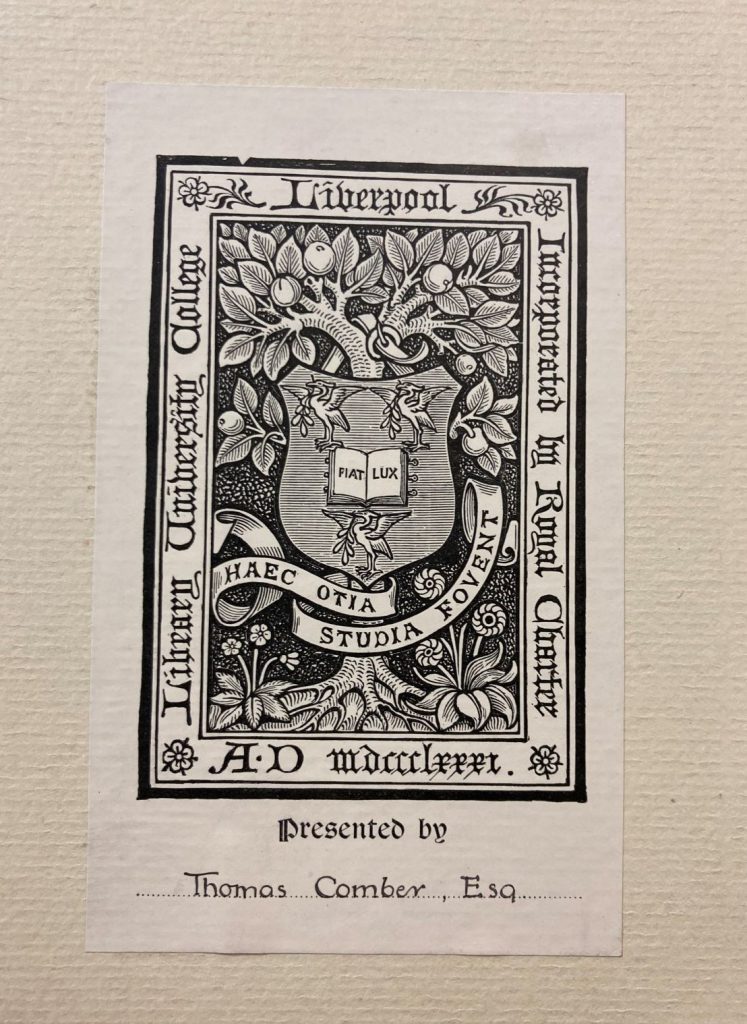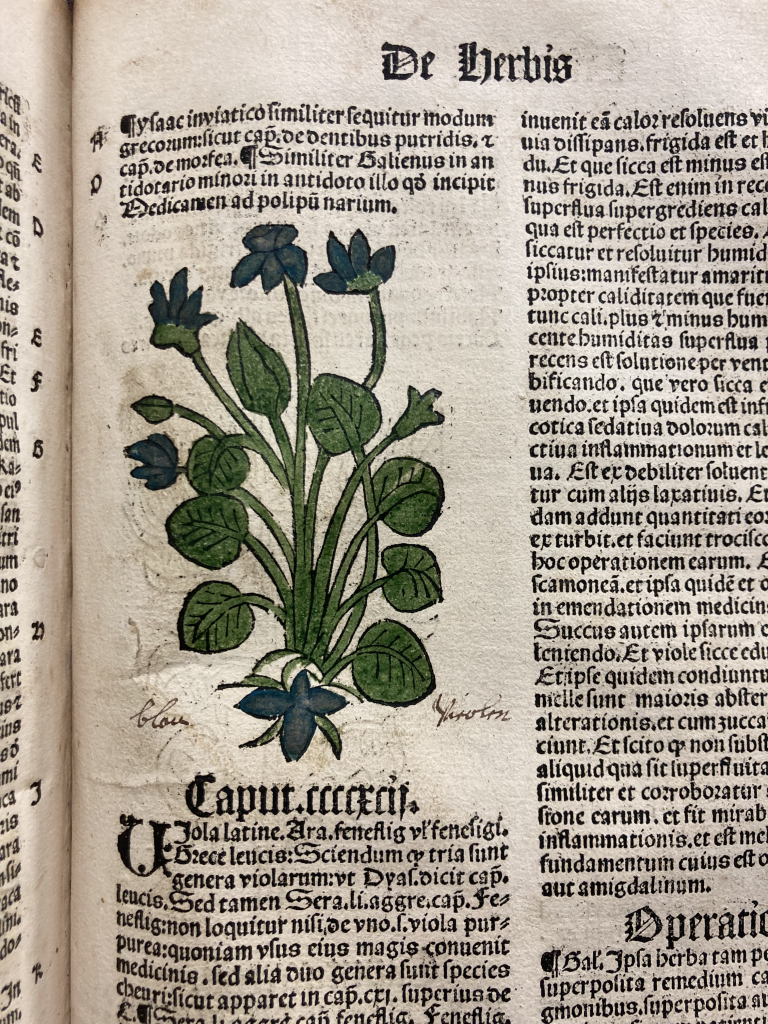As part of a recent project to catalogue some of the earliest printed books in our collection, I came across a handful of itemswith matching bookplates indicating that they were donated to University College Liverpool by a “Thomas Comber, Esq”.
This bookplate dates the donation to some time between 1881 – when University College Liverpool was founded – and 1903, which is when the University received its royal charter and came to be known as the University of Liverpool.
I noticed that the bookplate was found primarily on herbals – “books containing the names and descriptions of herbs, or of plants in general, with their properties and functions” (Arber, 14). In particular, early printed herbals detailed ways in which plants might be used to cure and prevent ailments and disease. They were usually illustrated with woodcut images to aide plant identification, and it is not uncommon for those images to be hand-coloured, making herbals amongst the most immediately and widely appealing of early printed books.
Given the botanical nature of the collection, and the clue in the dating of the bookplate, it didn’t take long to identify the donor as Thomas Radcliffe Comber (1837-1902). A quick check of the Annual Report for 1902 confirmed that the books were donated in that year by “the late Mr. Comber”, providing further evidence for this identification.
A merchant by profession, Comber’s free time was devoted to the study of plants and algae. Most notably, he made important contributions to the study of diatoms – single-celled algae that live within a cell wall made of silicon and generate about 20-50% of the oxygen produced on the planet every year. For more information on diatoms, and on Thomas Comber’s ongoing contribution to our understanding of them, I strongly encourage you to take a look at the Natural History Museum’s Diatoms Online website: Introduction | Diatoms Online (myspecies.info).
From aged 18 Comber was an active member of the Historical Society of Lancashire and Cheshire, presenting papers to the Transactions of the Historical Society of Lancashire and Cheshire on topics including the “diatomaceae of the Liverpool neighbourhood” (1858), “The dispersion of British plants” (1873), and “The etymology of plant names” (1875-1877).
It is in the last of these, a series of four articles in which Comber attempted to trace the names of plants “back to their earliest stage, in which they express a meaning, and then to follow them downward from their source to their present forms in different European languages” (part II, 1877), that Comber’s early printed book collection can most clearly be seen to have been put to use. The first author Comber references in Part I – which covers “fruits and edible berries” – is the Greek physician and botanist Pedanius Dioscorides (c.40-c.90 AD). Comber owned a 1543 printed edition of Dioscorides’s, De materia medica (SPEC H18.05):
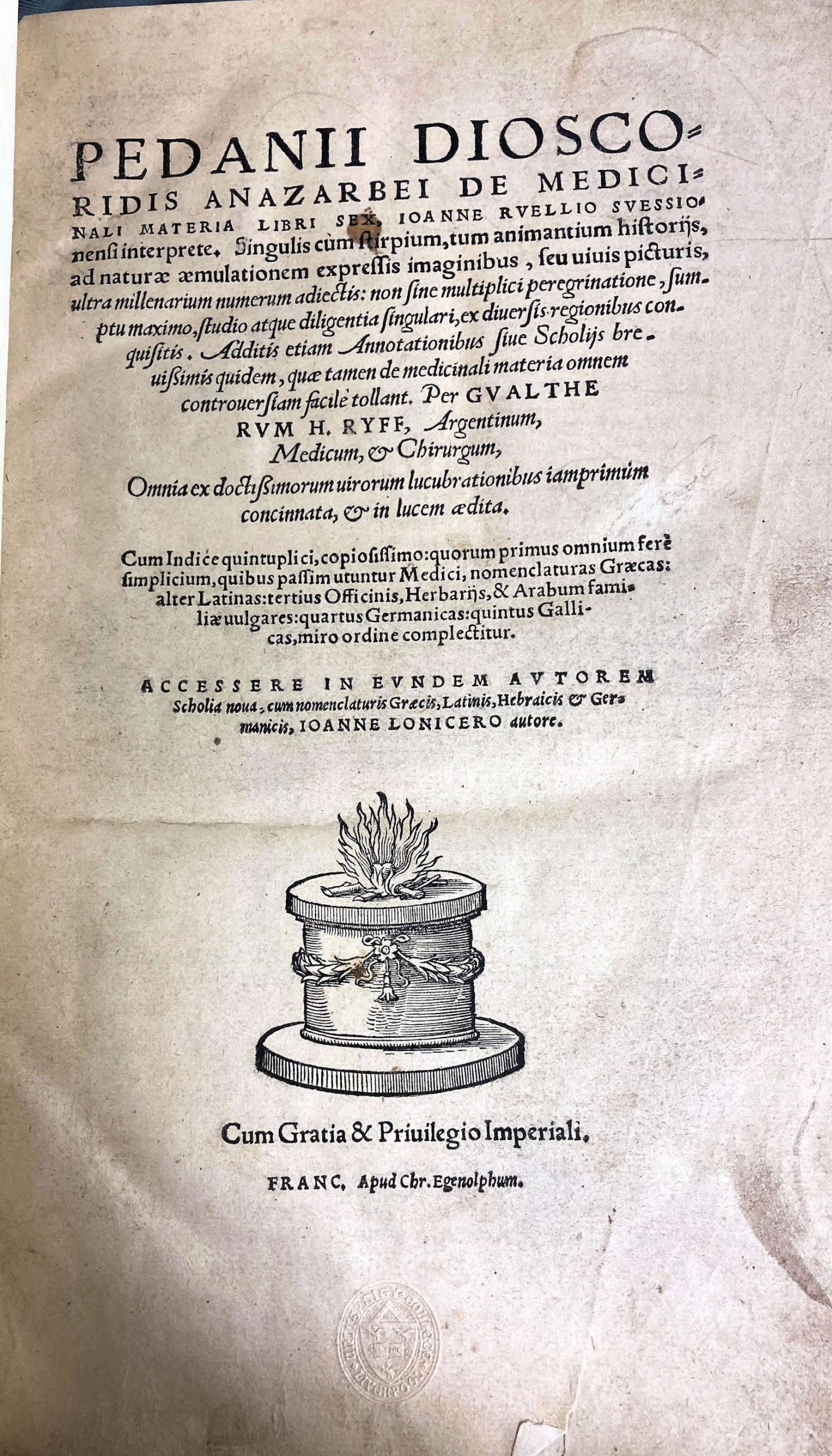
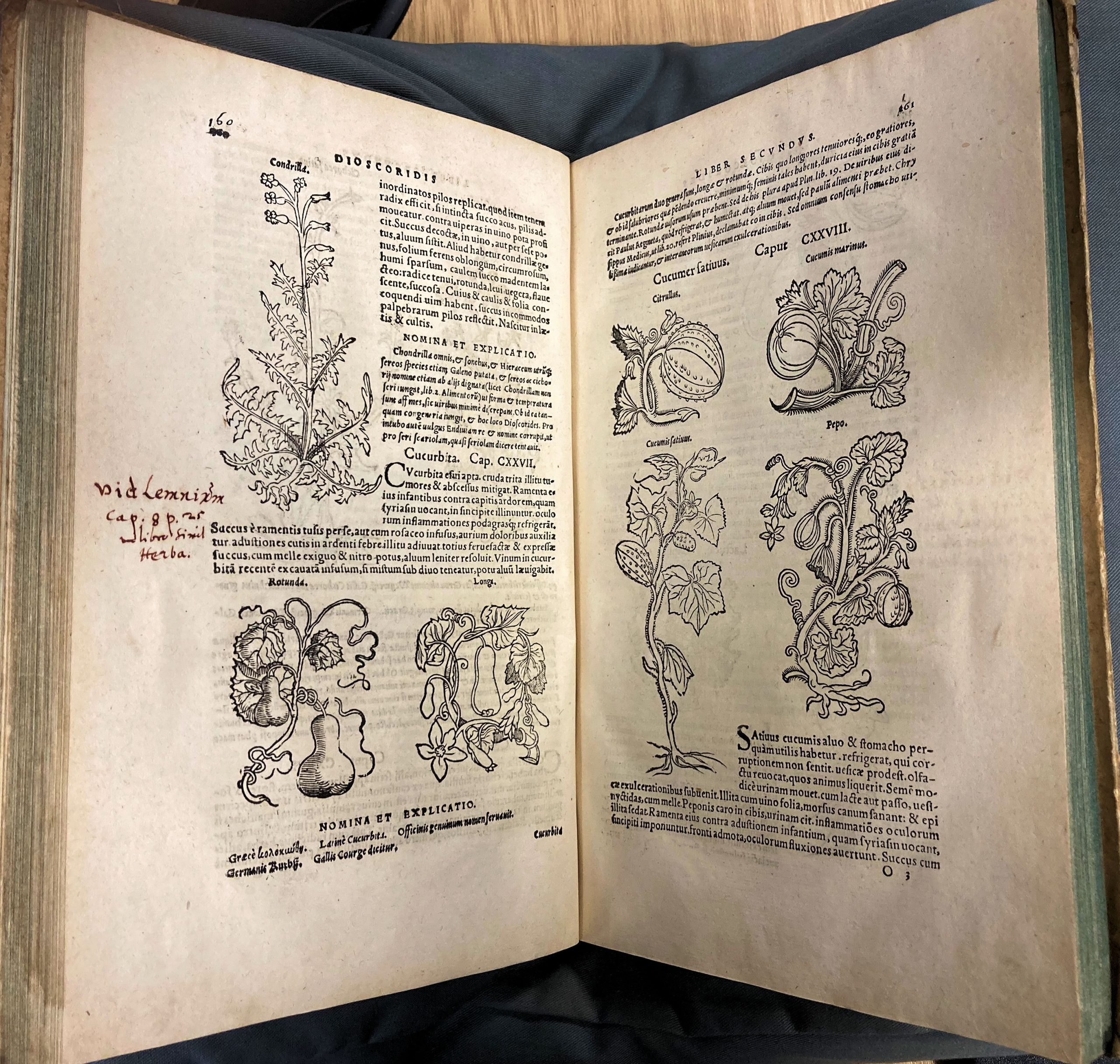
Thought to have been written around 77 AD, Dioscorides’s work includes descriptions of over 600 plants and their uses. The text was hugely influential, retaining its place as the leading authority on medical botany for over 1500 years. As Comber shows, the origins of many of the names we use for plants today can be found in the terminology employed by Dioscorides in his De materia medica.
As well as tracing the Latin and Greek roots of the names used for plants, Comber was attentive to the influence of names given to plants in other languages, including German, French, Slavonic and Celtic languages. Among the books he donated to the University is a 1491 copy of what is sometimes known as the Herbarius moguntinus, or Latin Herbal, with names added in manuscript in both Slavonic and Roman scripts (SPEC Inc.G09/A):
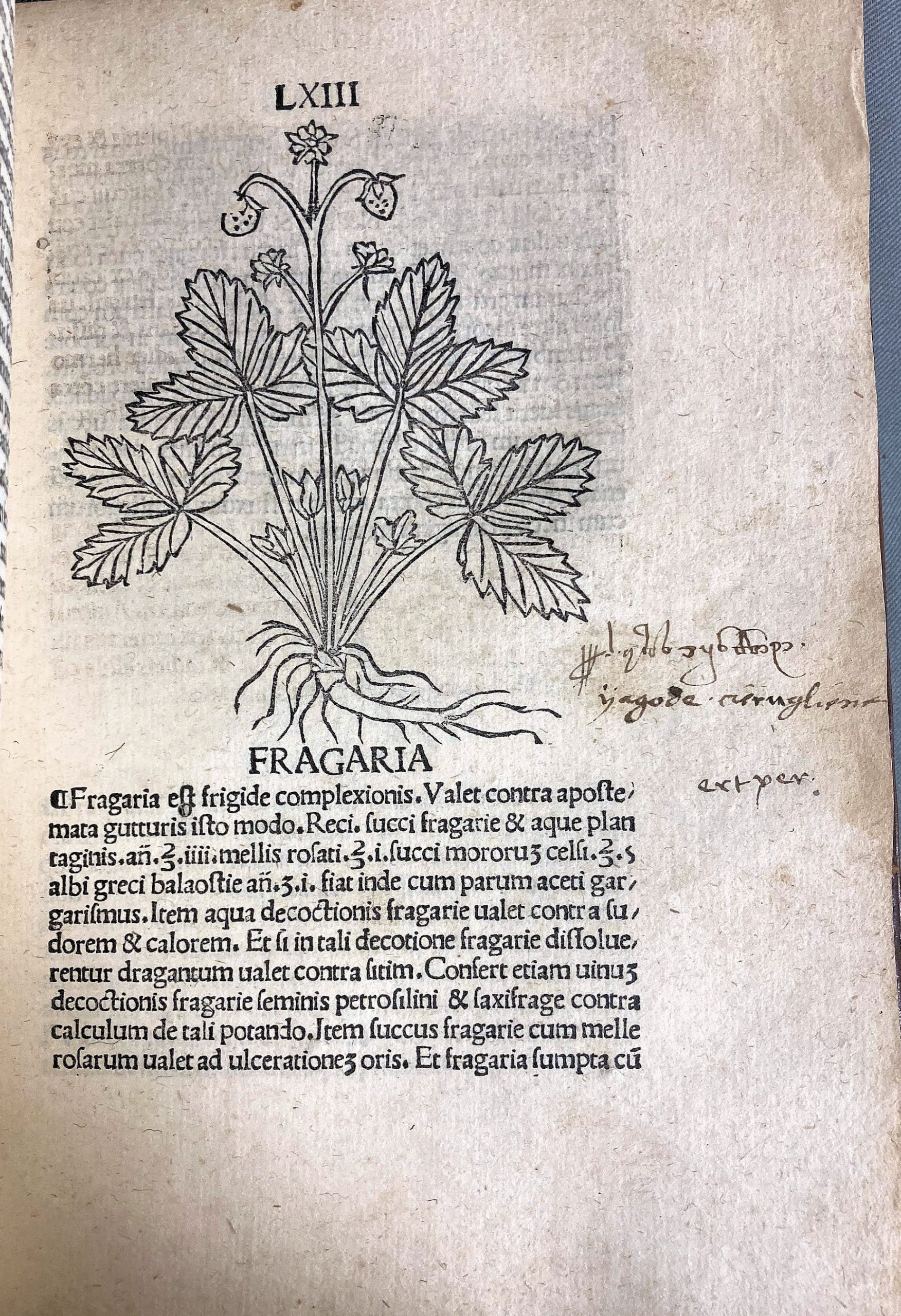
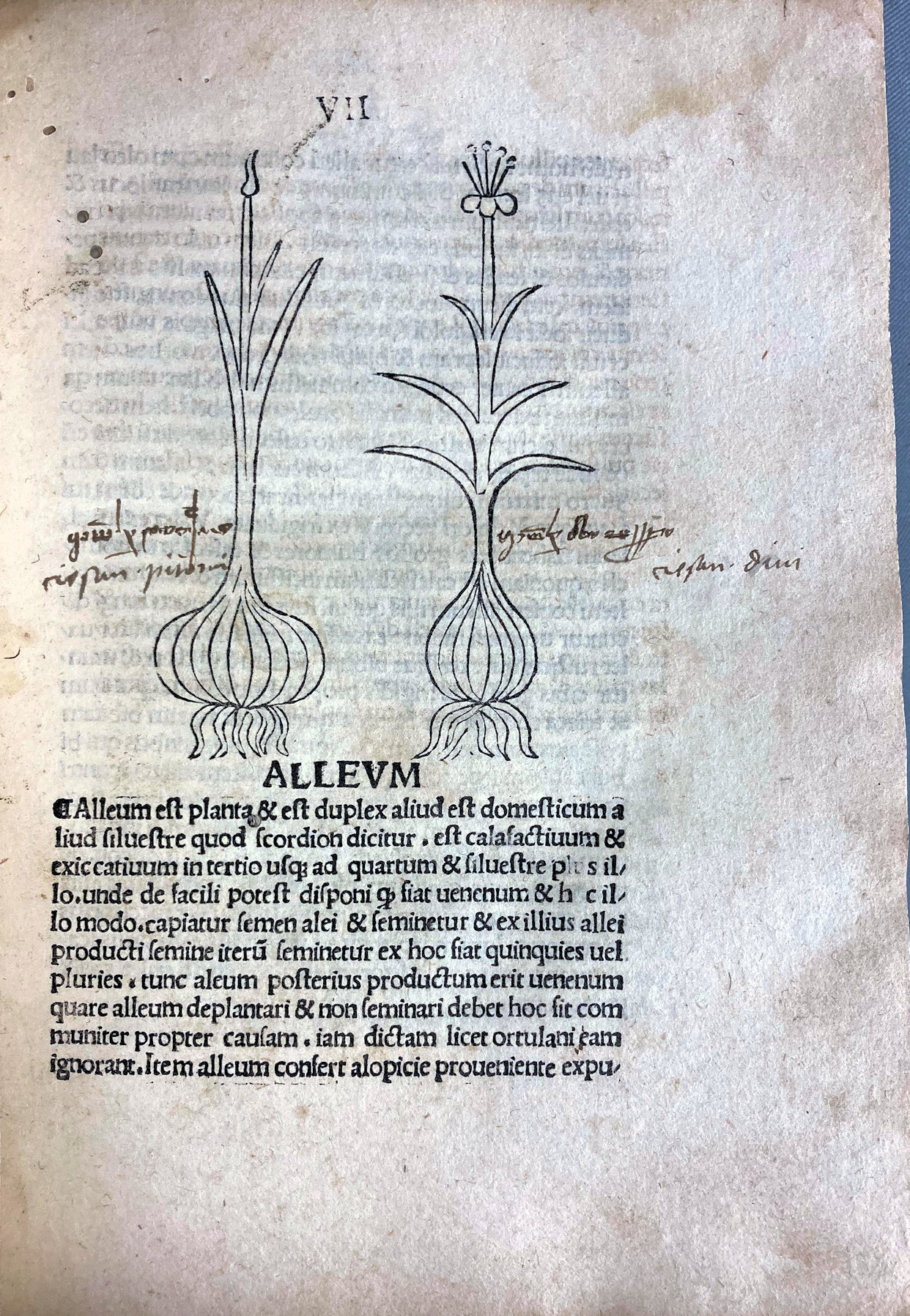
Thought to be derived from the works of a number of medieval and ancient authors, the Herbarius moguntinus was first printed by Peter Schöffer in Mainz, in 1484. Two other important herbals were printed in Mainz at the end of the 15th century, and Thomas Comber owned copies (from later printings) of them both. The first of these, the German text Gart der Gesundheit, was first printed in 1485, also by Peter Schöffer (Comber’s copy was printed in Augsburg, 1496: SPEC Inc.G01/B). The Comber copy lacks the original title page, with a replacement provided in manuscript by an earlier owner:
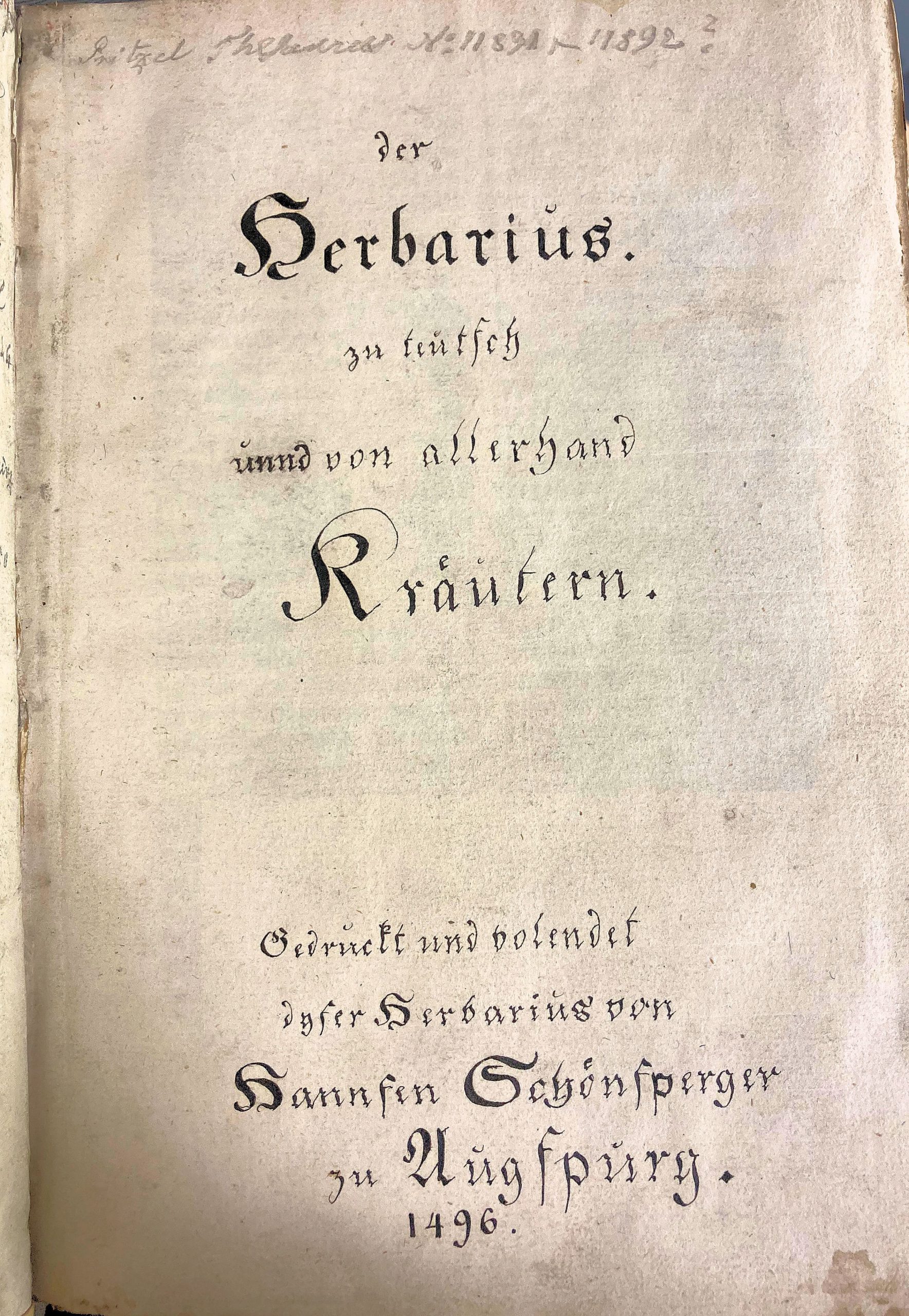
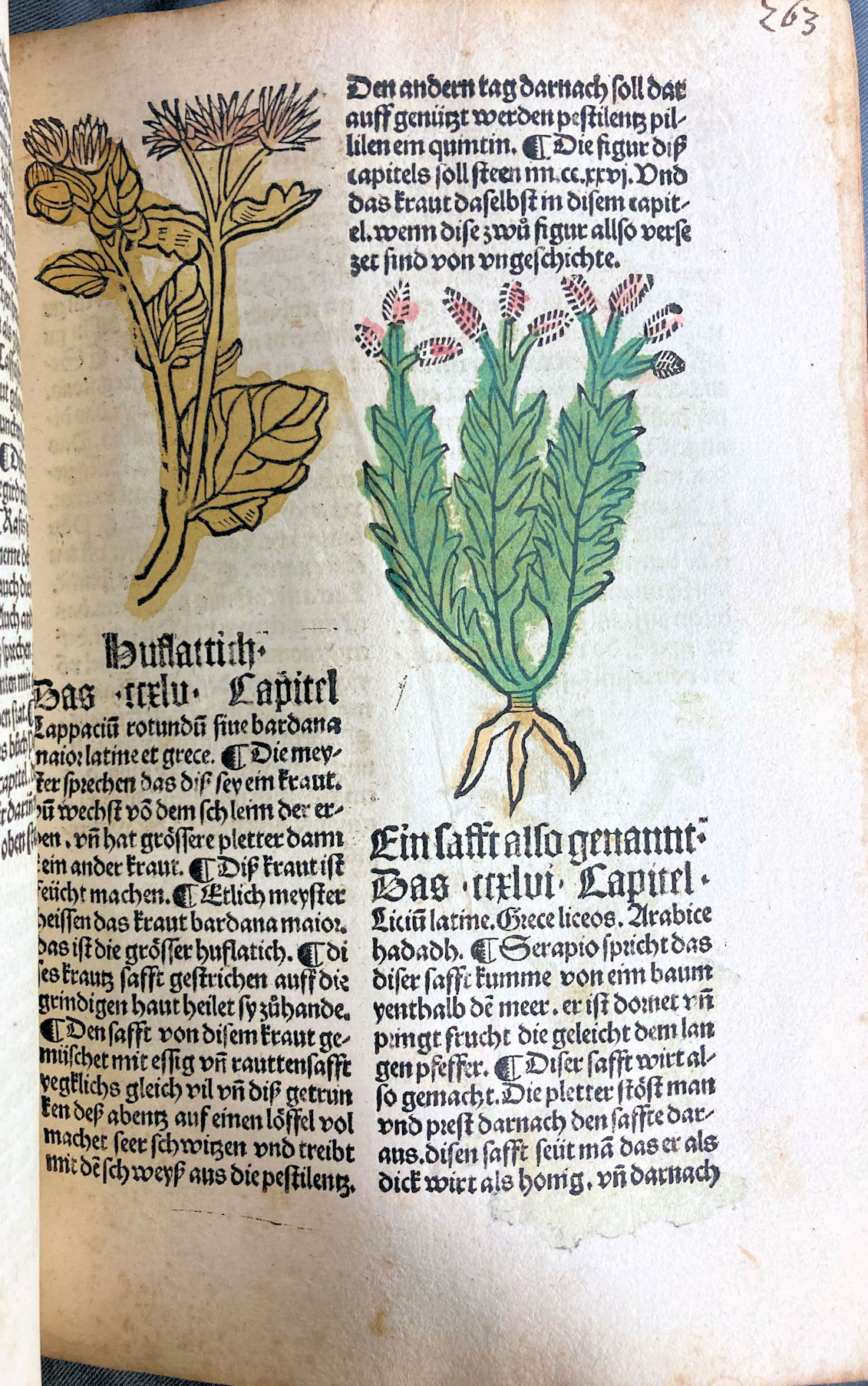
The illustrations in the Gart were considered more realistic than anything that had come before, and they were copied and adapted in a number of later works.
The final of the Mainz trilogy, the Latin Ortus sanitatis, was printed by Jacob Meydenbach in 1491 (Comber’s copy was printed in Strasbourg in 1517: SPEC EP.C20). The Ortus expanded beyond the plant world, with descriptions of animals (both real and mythical), stones, birds and fish:
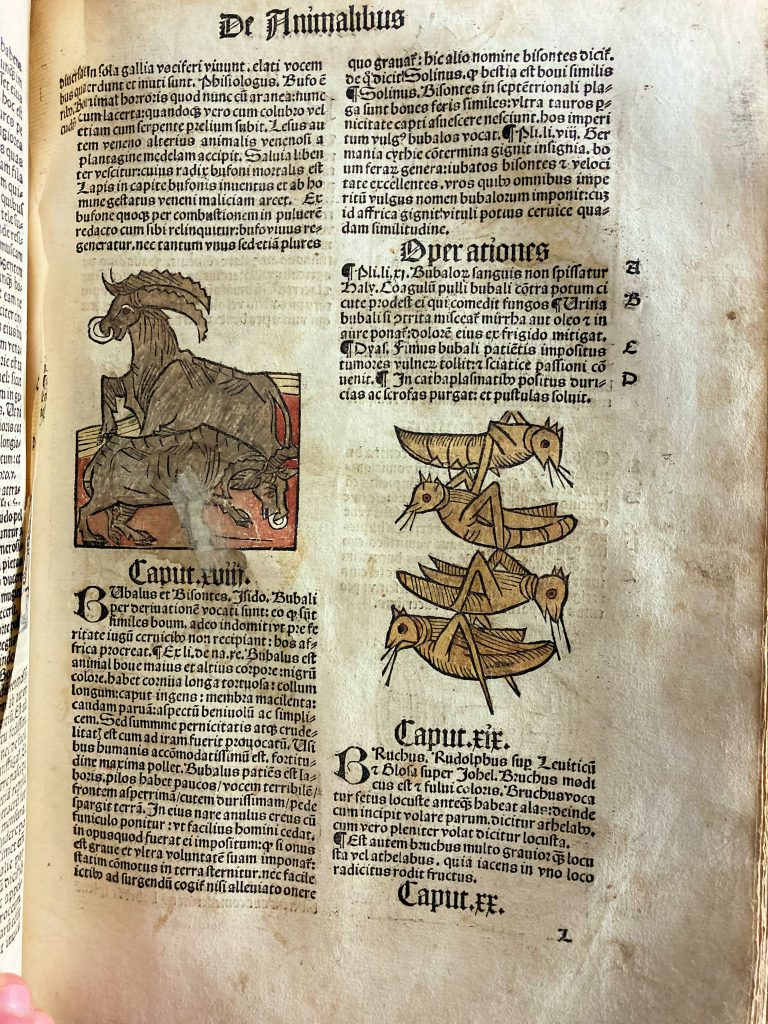

Another naturalist referenced by Comber in his articles on the etymology of plant names is the physician and divine William Turner (1509/10-1568), who is often described as the ‘father of British botany’. Comber owned a copy of the first complete edition of Turner’s great work – The first and seconde parts of the herbal of William Turner Doctor in Phisick …(SPEC H18.04). Turner travelled all over England, Germany and Italy in order to, as he put it, “knowe and se the herbes my selfe”. The resulting work is considered to be the first systemic survey of English plants, including the first known descriptions of no fewer than 238 plants native to Britain (Arber, p. 124). Plant names are given in Greek, Latin and English. In our copy, an early owner, the Somerset vicar Alexander Spraygote (-1592), has noted some concerns regarding the accuracy of Turner’s work.
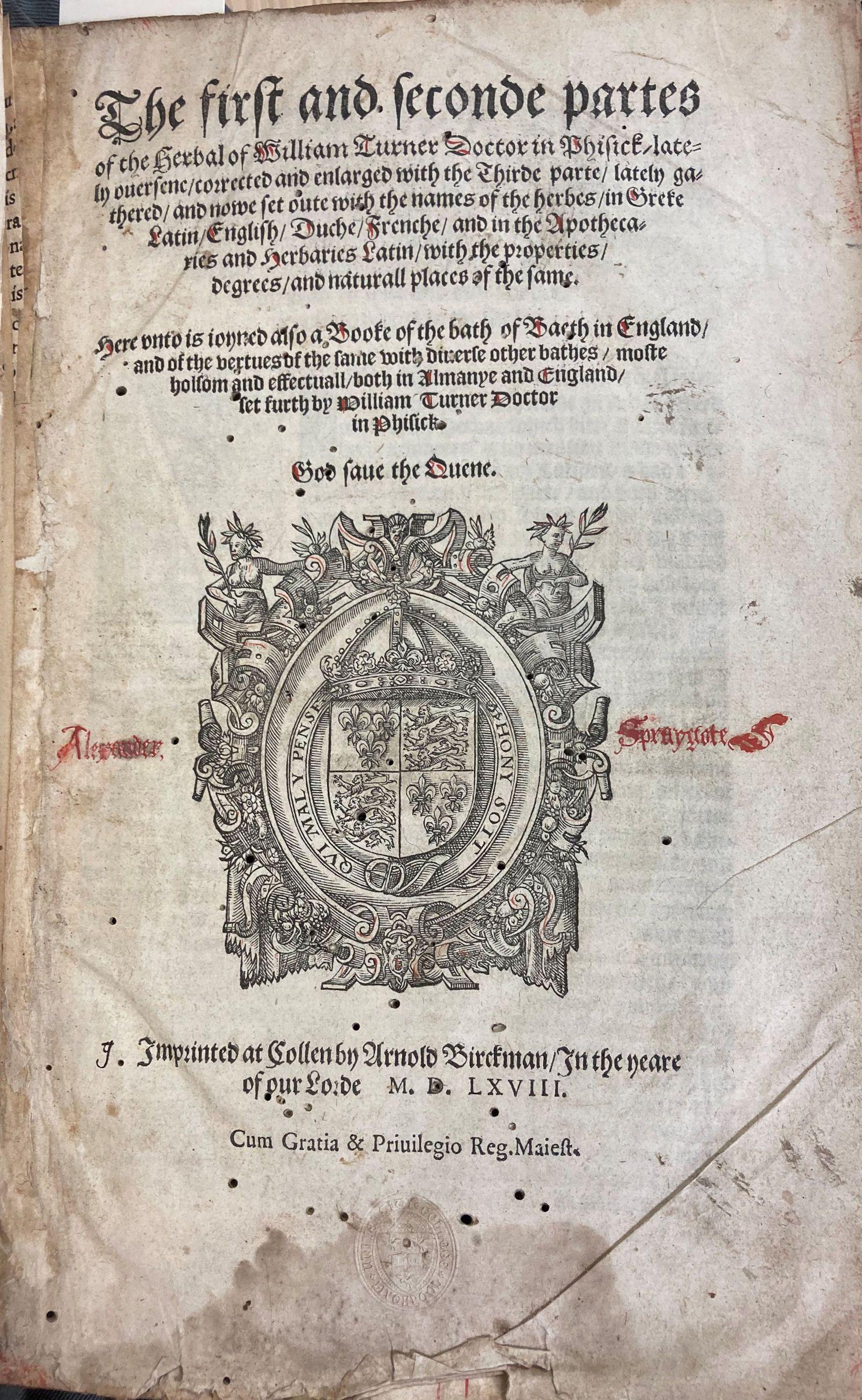
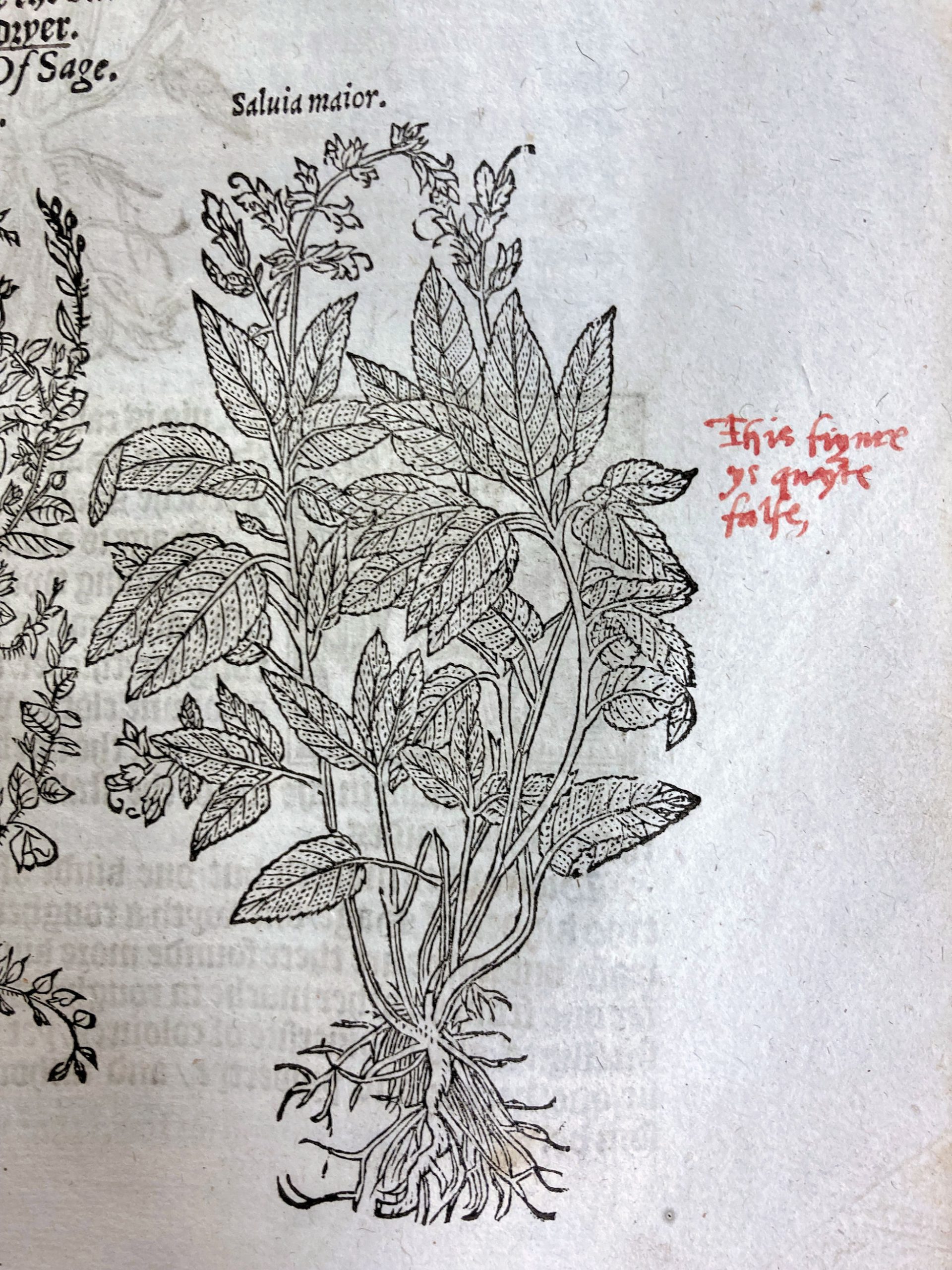
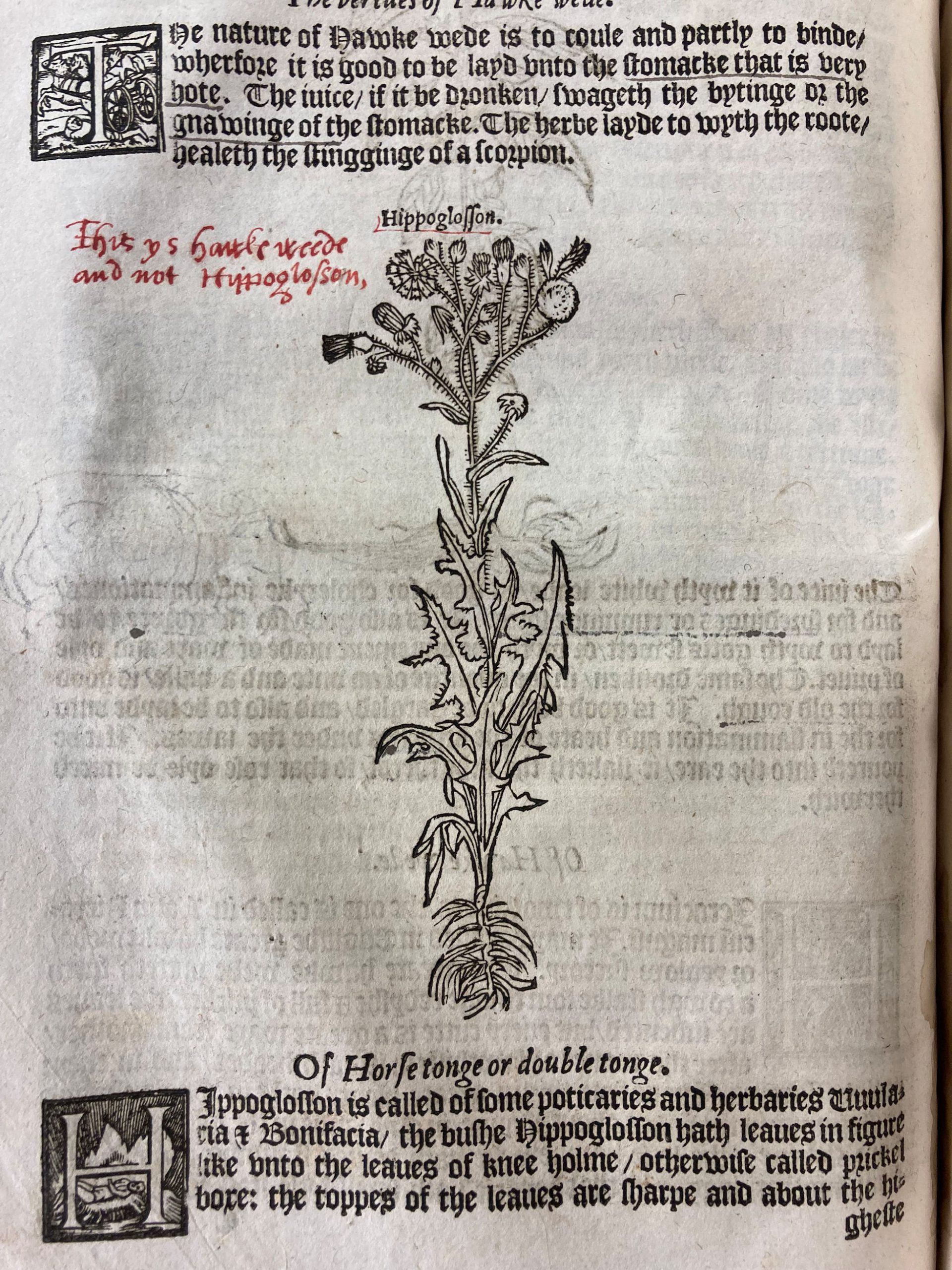
The small collection of books donated by Comber is rich indeed in botanical gems, including a hand-coloured copy of Matthias de L’Obel’s Plantarum, seu, stirpium historia (SPEC L20.09), a number of illustrated works on gardening, and two wonderfully-illustrated 16th century editions of works on the medical uses of plants from the West Indies, by Nicolás Monardes (SPEC H29.29); and India, by Garcia d’Orta (SPEC H29.30). For further information on the Thomas Comber collection at the University of Liverpool Special Collections and Archives, please do not hesitate to contact us at [email protected].
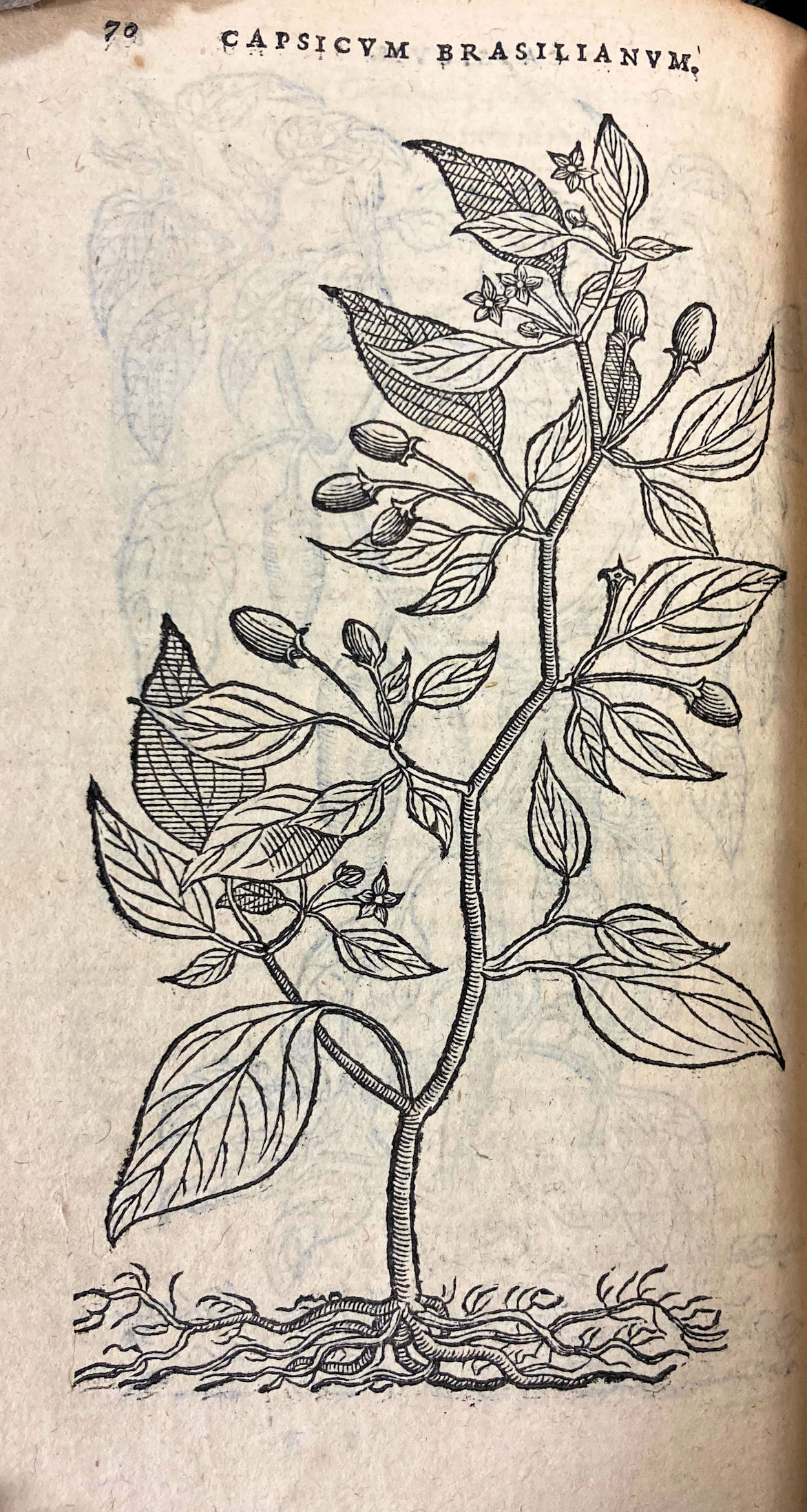
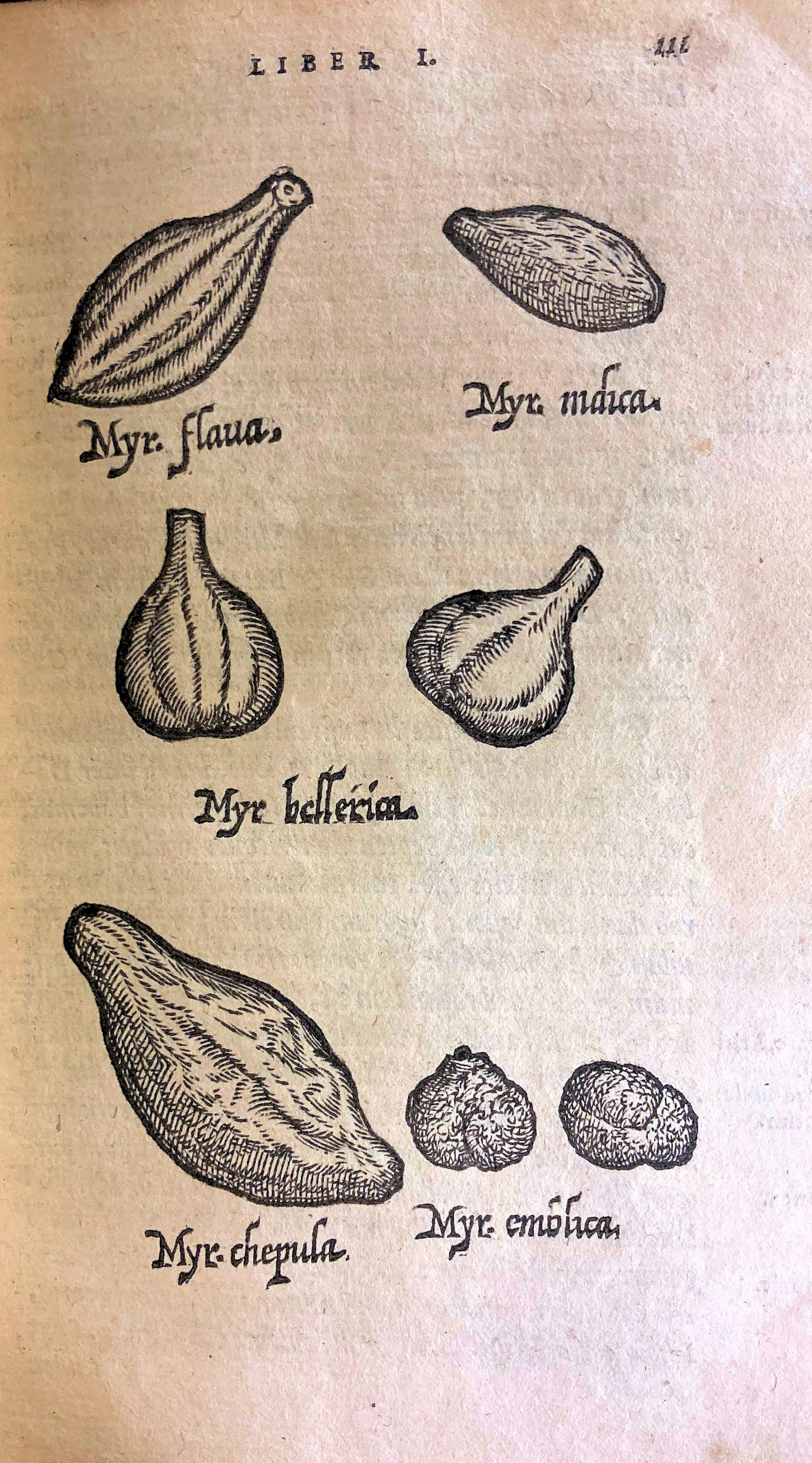
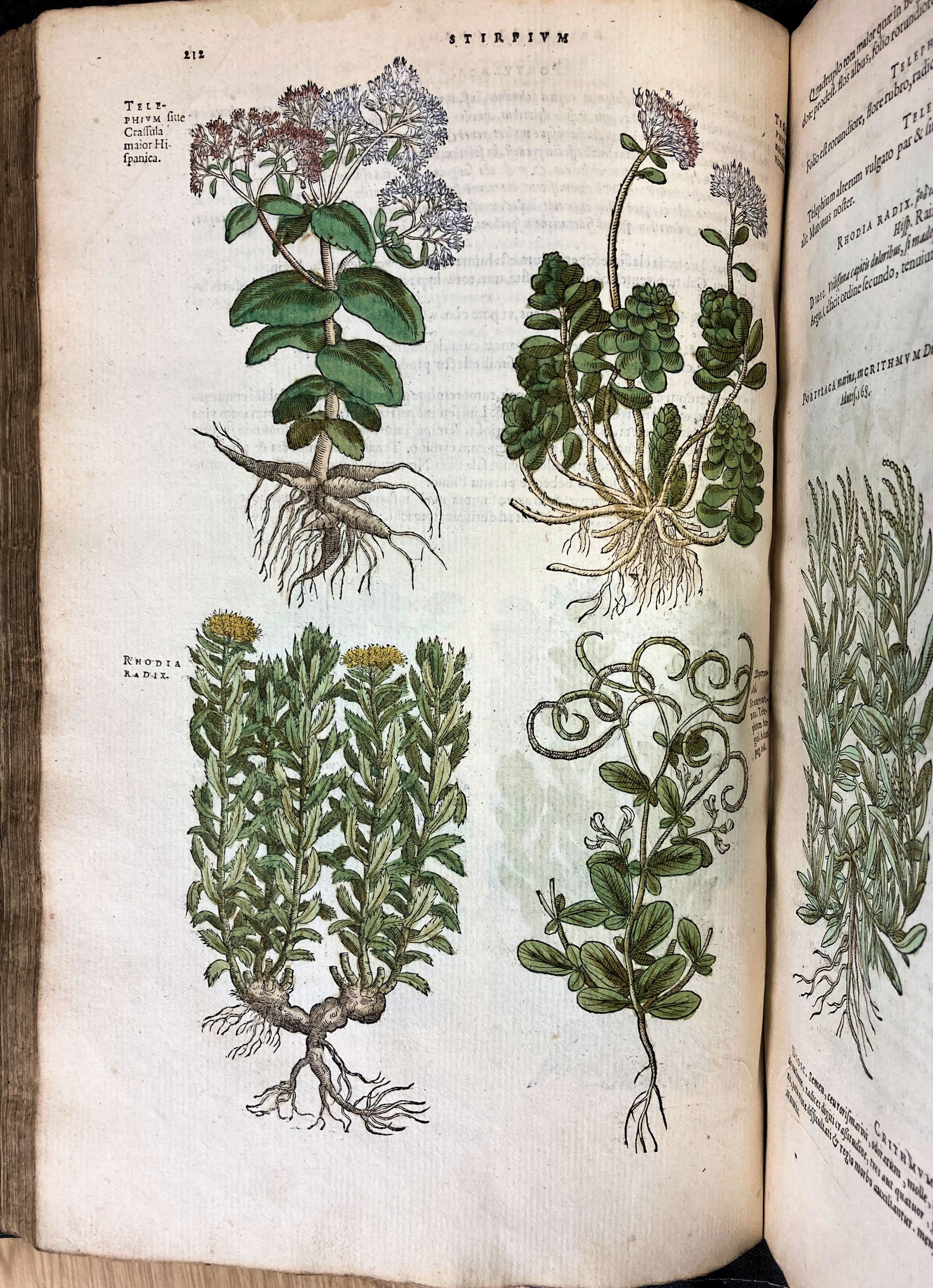
References and further reading:
Arber, Agnes, Herbals, their origin and evolution; a chapter in the history of botany, 1470-1670, Cambridge University Press: 1912
The archive of the Transactions of The Historic Society of Lancashire and Cheshire are available online here: Archive – The Historic Society of Lancashire & Cheshire (hslc.org.uk) (accessed 06/09/2022)
Natural History Museum, Diatoms online, (accessed 06/09/2022).
